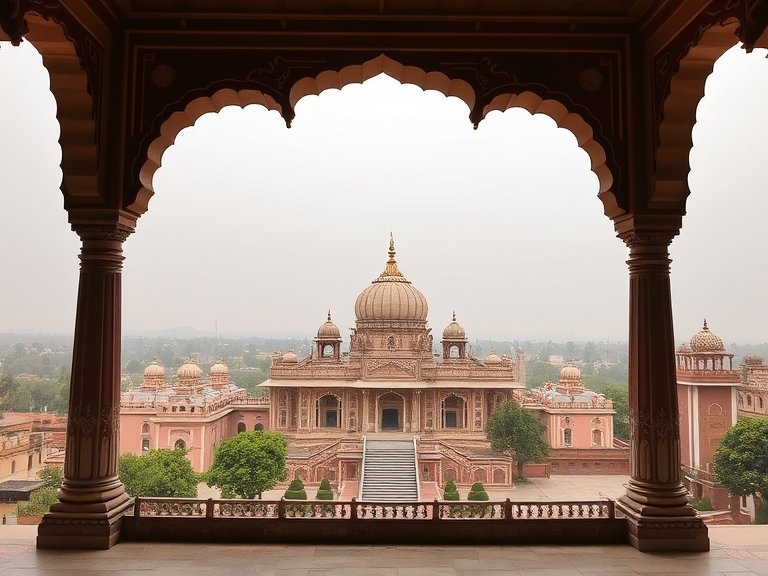Lucknow: Uttar Pradesh, often referred to as the heart of India, is a treasure trove of heritage tourism, offering a seamless blend of history, culture, and spirituality. The state’s rich tapestry of heritage sites attracts millions of visitors annually.
The iconic Taj Mahal in Agra, a UNESCO World Heritage Site and one of the Seven Wonders of the World, is a timeless symbol of love and architectural brilliance. Nearby, the Agra Fort and Fatehpur Sikri, another UNESCO-listed site, showcase the grandeur of the Mughal era.
In Varanasi, the world’s oldest continuously inhabited city, tourists can experience the mesmerizing Ganga Aarti at the ghats and explore ancient temples like Kashi Vishwanath. The nearby Sarnath, where Lord Buddha delivered his first sermon, holds great significance for Buddhist pilgrims.
Ayodhya, the birthplace of Lord Rama, and Mathura-Vrindavan, associated with Lord Krishna, are major spiritual hubs drawing devotees year-round. These cities also celebrate vibrant festivals like Ram Navami and Holi with unmatched fervor.
The capital city, Lucknow, known for its Nawabi heritage, boasts architectural marvels like the Bara Imambara, Chota Imambara, and the Rumi Darwaza, reflecting the splendor of the Awadh dynasty.
Other notable sites include Jhansi Fort, which stands as a testament to India’s fight for independence, and Chunar Fort, perched along the Ganges, echoing tales of ancient kingdoms.

With its well-preserved monuments, cultural festivals, and vibrant history, Uttar Pradesh’s heritage sites offer a deeply enriching experience, making the state a cornerstone of India’s tourism map. Whether it’s exploring the Mughal opulence or delving into ancient spirituality, Uttar Pradesh is a journey through time.
The heritage circuit in Uttar Pradesh is significant from a tourism point of view due to its rich cultural, historical, and spiritual legacy. This circuit is pivotal for showcasing the state’s multifaceted heritage, attracting both domestic and international tourists. Here’s why the heritage circuit is crucial:
1. Cultural Preservation and Promotion
- Architectural Marvels: Uttar Pradesh is home to iconic structures like the Taj Mahal, Fatehpur Sikri, and Agra Fort, which are UNESCO World Heritage Sites. These represent the grandeur of Mughal and other historical eras.
- Local Art and Craft: Cities like Varanasi and Lucknow are renowned for traditional crafts such as Banarasi silk and Chikankari embroidery, offering tourists a glimpse into India’s artisanal legacy.
2. Spiritual Tourism
- Uttar Pradesh is a hub for spiritual tourism with places like Varanasi, the oldest living city in the world, and Ayodhya, the birthplace of Lord Rama.
- Pilgrimage sites such as Mathura and Vrindavan, associated with Lord Krishna, and Sarnath, where Lord Buddha delivered his first sermon, hold immense appeal for devotees and spiritual seekers globally.
3. Economic Impact
- The heritage circuit contributes significantly to the local economy by creating jobs in sectors like hospitality, transportation, and handicrafts.
- Festivals and events linked to heritage tourism, such as the Taj Mahotsav and Lucknow Mahotsav, attract large crowds, boosting trade and commerce.
4. Historical Education and Awareness
- Monuments and heritage sites serve as open classrooms for history enthusiasts, students, and researchers, offering insights into India’s ancient and medieval periods.
5. Interconnected Tourism
- The circuit integrates cities with diverse heritage, encouraging tourists to explore multiple destinations within a single trip. For example, the Agra-Lucknow-Varanasi route combines Mughal architecture, Nawabi culture, and spiritual experiences.
- Improved infrastructure, like the Lucknow-Agra Expressway and Varanasi-Allahabad road network, facilitates seamless travel within the circuit.
6. Promotion of Lesser-Known Sites
- Beyond the globally recognized landmarks, the heritage circuit includes lesser-explored gems such as Chunar Fort, Jhansi Fort, and Bithoor, enriching the overall tourist experience.
7. Global Recognition
- Uttar Pradesh’s heritage circuit plays a pivotal role in branding India as a top-tier tourist destination. The Taj Mahal alone draws millions annually, making the circuit a critical part of India’s “Incredible India” campaign.
8. Encouragement of Sustainable Tourism
- Focus on heritage tourism encourages the conservation of historical sites and local traditions while educating visitors about the importance of preserving cultural and historical landmarks.
The heritage circuit in Uttar Pradesh offers an unparalleled blend of history, culture, and spirituality, making it a cornerstone of the state’s tourism strategy and a key driver of regional and national tourism growth.





